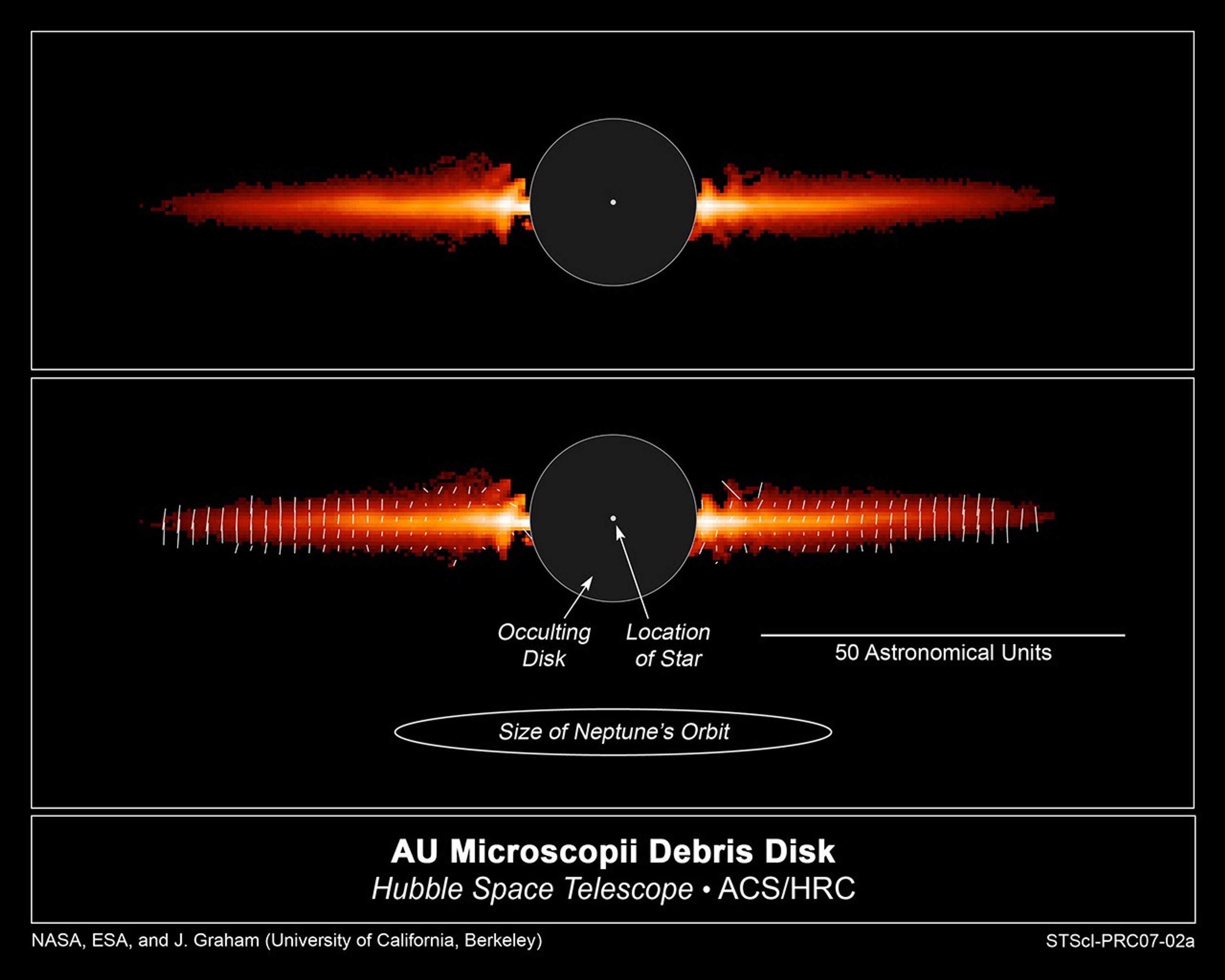1 min read
Hubble’s Snapshot of Debris Disk Around Young Star – Annotated

About the Object
- R.A. PositionR.A. PositionRight ascension – analogous to longitude – is one component of an object's position.20h 45m 9.53s
- Dec. PositionDec. PositionDeclination – analogous to latitude – is one component of an object's position.-31° 20' 27.19"
- ConstellationConstellationOne of 88 recognized regions of the celestial sphere in which the object appears.Microscopium
- DistanceDistanceThe physical distance from Earth to the astronomical object. Distances within our solar system are usually measured in Astronomical Units (AU). Distances between stars are usually measured in light-years. Interstellar distances can also be measured in parsecs.Approximately 33 light-years (10 parsecs).
- DimensionsDimensionsThe physical size of the object or the apparent angle it subtends on the sky.This image is 16 arcseconds (160 Astronomical Units) across.
About the Data
- Data DescriptionData DescriptionProposal: A description of the observations, their scientific justification, and the links to the data available in the science archive.
Science Team: The astronomers who planned the observations and analyzed the data. "PI" refers to the Principal Investigator.This image was created from HST data from the following proposal 10228: P. Kalas, J. Graham, and B. Matthews (University of California, Berkeley). - InstrumentInstrumentThe science instrument used to produce the data.HST>ACS/HRC
- Exposure DatesExposure DatesThe date(s) that the telescope made its observations and the total exposure time.August 1, 2004
- FiltersFiltersThe camera filters that were used in the science observations.F606W (V) (POL0V, POL60V, and POL120V)
- Object NameObject NameA name or catalog number that astronomers use to identify an astronomical object.AU Microscopii, AU Mic, GJ 803, HD197481
- Object DescriptionObject DescriptionThe type of astronomical object.Spectral Type "M0" Star with Debris Disk
- Release DateJanuary 7, 2007
- Science ReleaseHubble Observations Provide Insight into Planet Birth
- Credit

This image is representatively colored in a heat map color scheme. This image is a composite of many separate exposures made by the ACS/HRC instrument on the Hubble Space Telescope. Exposures were made through a filter sampling a broad range of wavelengths plus three separate polarizing filters with angles of polarization at 0°, 60° and 120°. The exposures have been combined into a single monochromatic image with brightness values mapped to a sequence of colors.

Related Images & Videos

Hubble's Snapshot of Debris Disk Around Young Star
The top view, taken with NASA's Hubble Space Telescope, shows light reflected off dust in a debris disk around the young star AU Microscopii. The bottom frame points out the important features in this image. The image shows the flattened disk, appearing like Saturn's rings, but...

Birth Ring of Debris Around AU Microscopii (AU Mic)
This is an artist's concept of the birth ring of debris encircling the 12-million-year-old star AU Microscopii. Porous, snowball-sized bodies collide within the birth ring. Stellar winds disperse dust grains away from the star beyond the birth ring to the outer debris disk.
Share
Details
Claire Andreoli
NASA’s Goddard Space Flight Center
Greenbelt, Maryland
claire.andreoli@nasa.gov





























